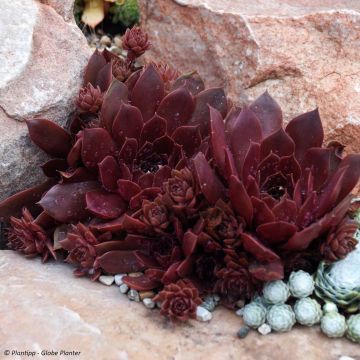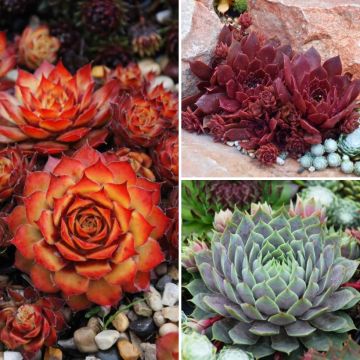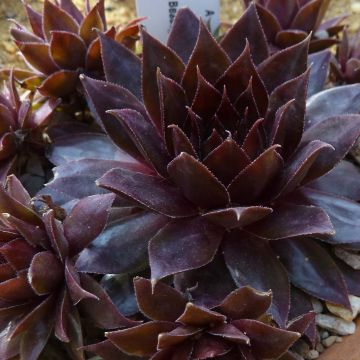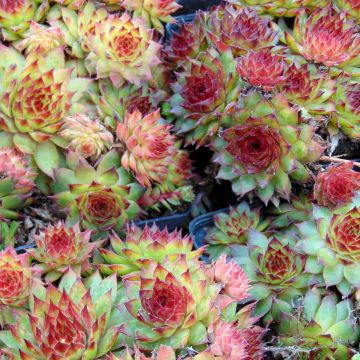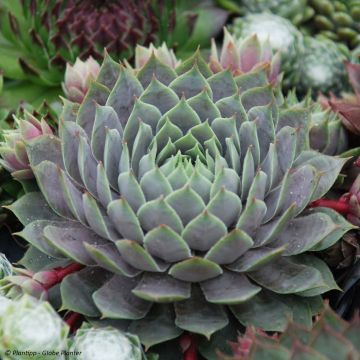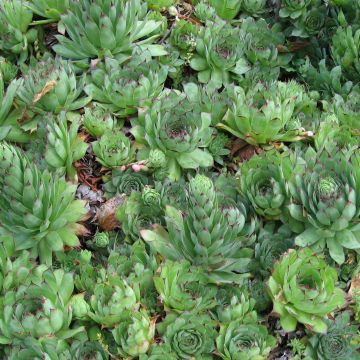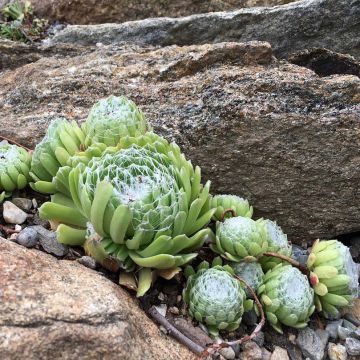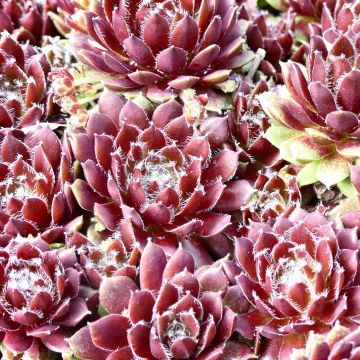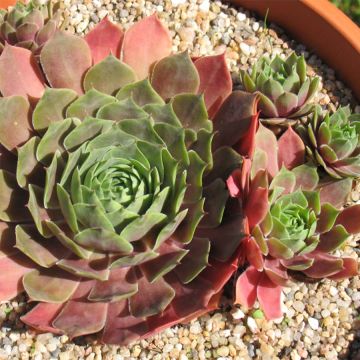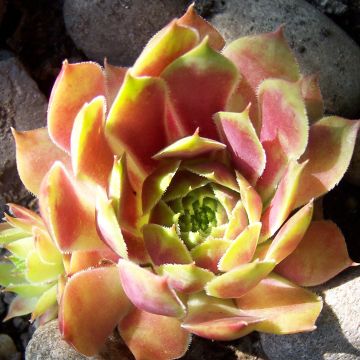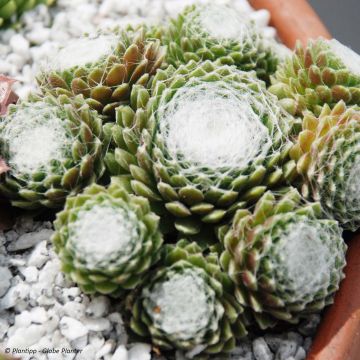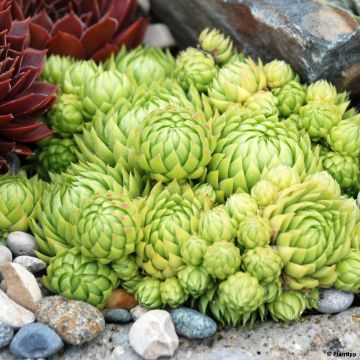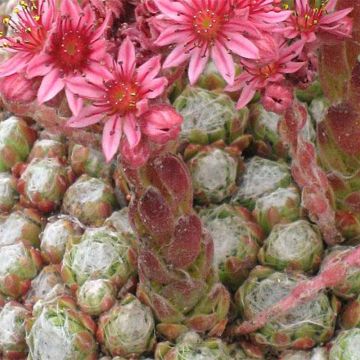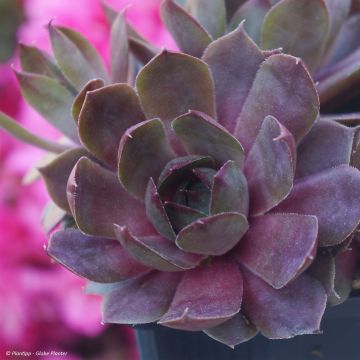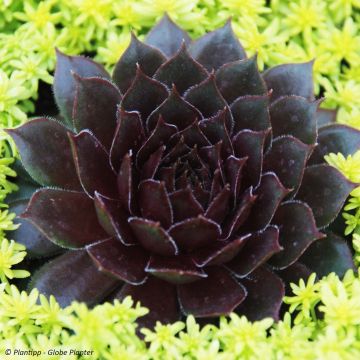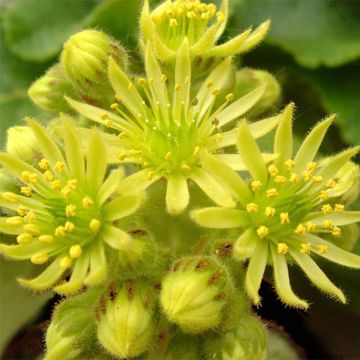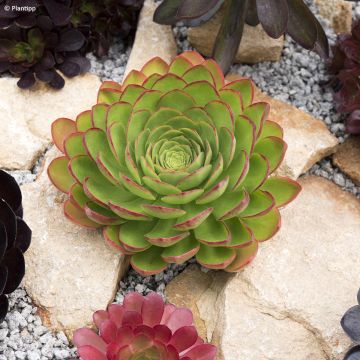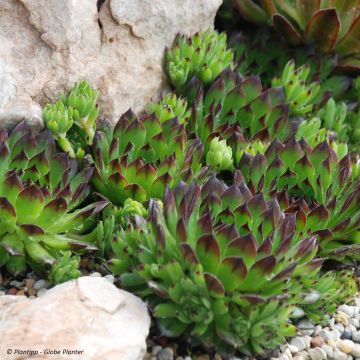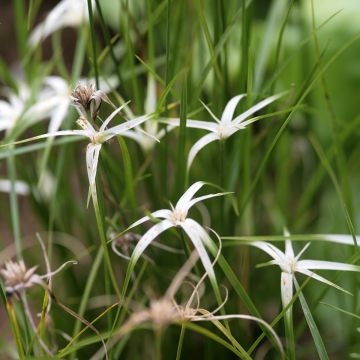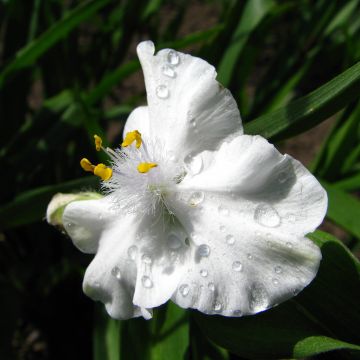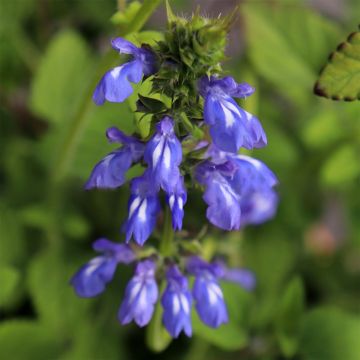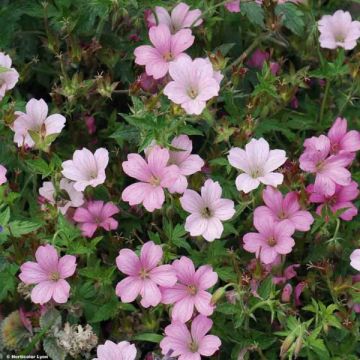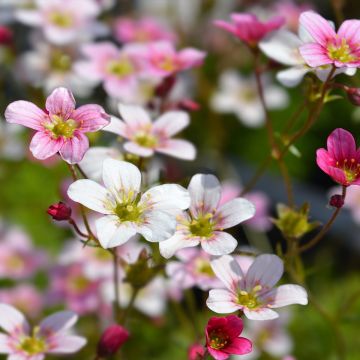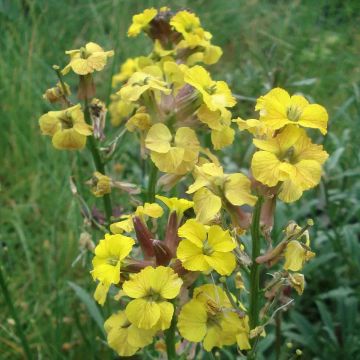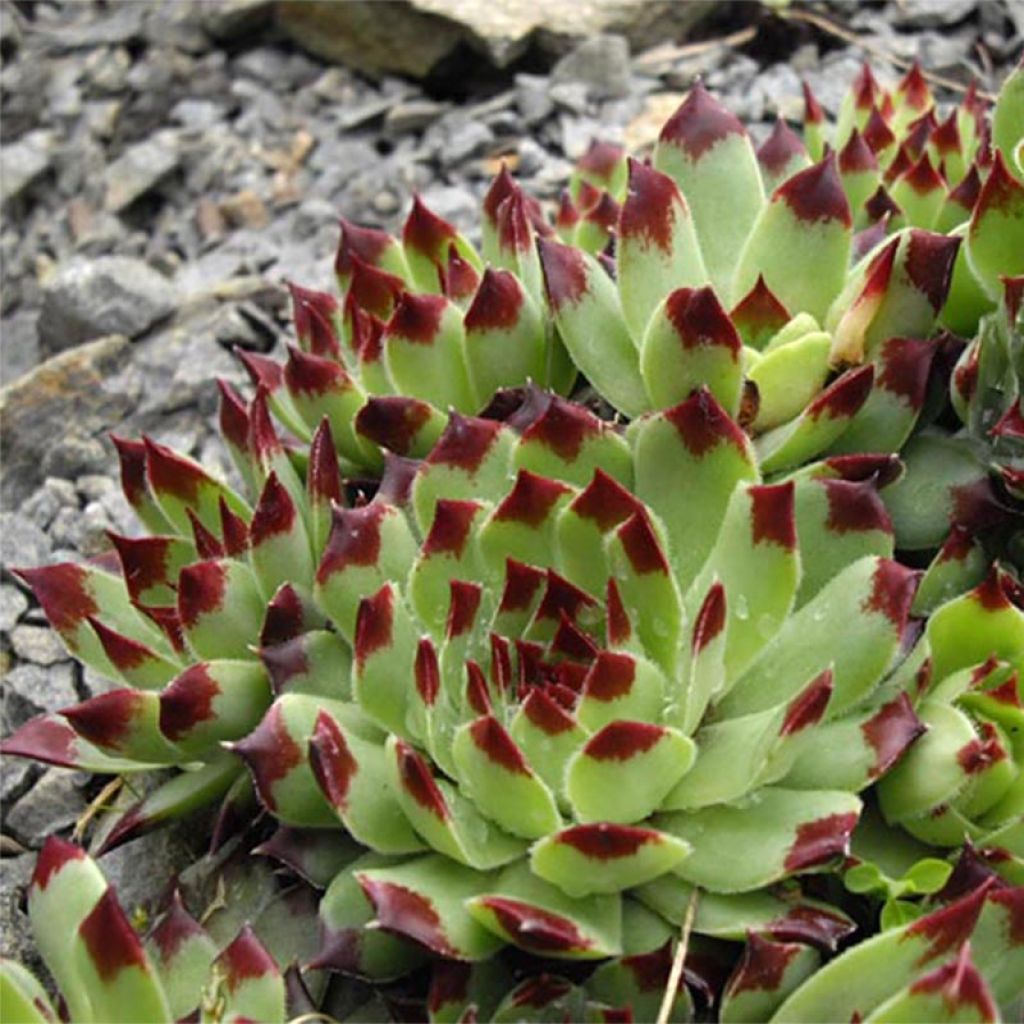

Sempervivum calcareum
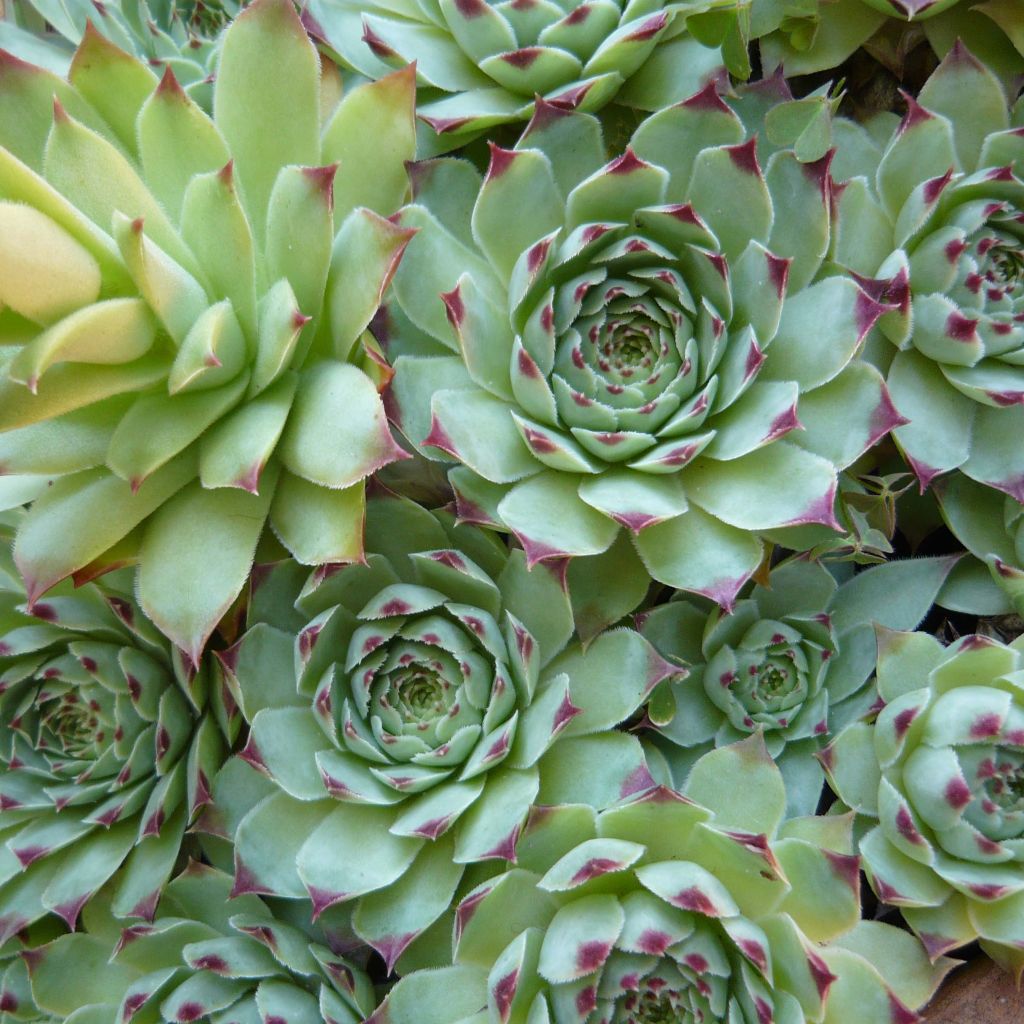

Sempervivum calcareum
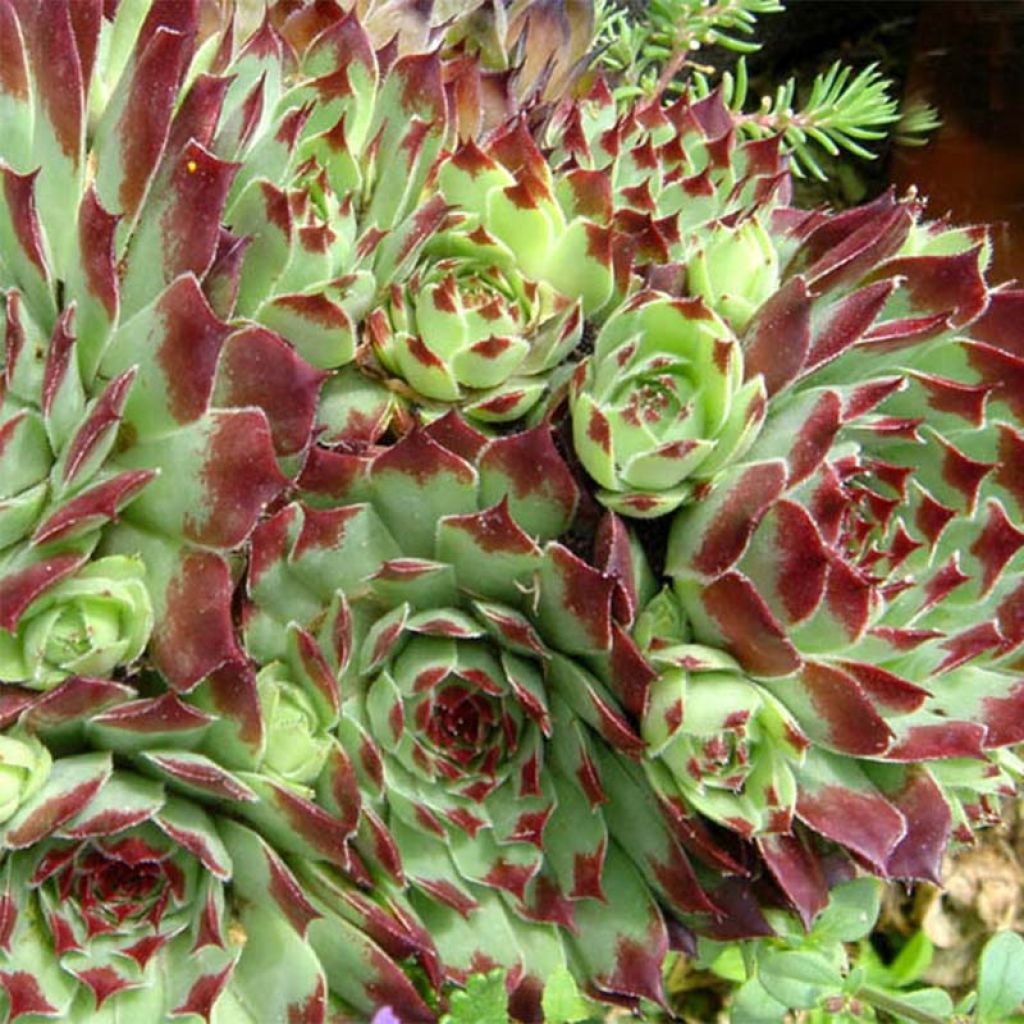

Sempervivum calcareum
Sempervivum calcareum
Sempervivum calcareum
Common Houseleek, Hen and Chicks, Roof Houseleek
Quite small, but well established, I'm expecting babies in the spring.
brindille, 22/01/2024
Why not try an alternative variety in stock?
View all →This plant carries a 12 months recovery warranty
More information
We guarantee the quality of our plants for a full growing cycle, and will replace at our expense any plant that fails to recover under normal climatic and planting conditions.
From €5.90 for pickup delivery and €6.90 for home delivery
Express home delivery from €8.90.
Does this plant fit my garden?
Set up your Plantfit profile →
Description
Sempervivum calcareum, better known as the Limestone Houseleek, is very similar to the botanical species Sempervivum tectorum, well-known to gardeners and one of the easiest to grow. It is distinguished mainly by its smaller flowers with narrower petals and slightly more modest growth. Much less common than its close relative, it sometimes appears on the walls and roofs of high-altitude villages. This curious perennial plant forms mats of small succulent rosettes, which are light green with a brown border, reminiscent of miniature artichokes. Its pale-pink star-shaped flowers emerge from the centre of the mature rosettes, on a summer day, like an unexpected burst of colour. This very hardy perennial, which lives almost without soil and relies on rainwater, will easily fill small terracotta pots, neglected areas, or cracks in an old wall with a highly organised cluster of plants.
The Limestone Houseleek is a succulent plant belonging to the Crassulaceae family. It grows naturally in rock gardens, on cliffs, and in dry meadows, always in limestone soil, at altitudes between 400 and 1800m (1312 and 5905ft). Like many calcicolous plants (lime-loving), it also adapts well to neutral or slightly acidic soils.
The roots of this perennial are thick and long. They penetrate deeply into the crevices of rocks, ensuring a good grip on the walls while drawing water from deep sources. The plant slowly forms small colonies of rosettes of different sizes, juxtaposed, reaching 6cm (2in) in diameter when mature, and not exceeding 5 to 6cm (2in) in height. Over time, this houseleek can spread through its stoloniferous stems, forming a mat that can cover 50cm (20in) of ground, perfectly following its contours. Each rosette is composed of numerous pointed, stalkless light green leaves, often tinged with brown. The young leaves can be glandular or hairy.
The flowering appears on rosettes aged 2 or 3 years, which will then die, not without ensuring their perpetuity by producing seeds and/or several small peripheral rosettes. The 12cm (5in) tall flower stalks develop in summer, formed by thick, reddish-brown-scaled stems, bearing 8 to 12 star-shaped flowers with 8 to 10 pale-pink, somewhat dull petals.
Sempervivum calcareum, like all houseleeks, is a blessing for gardens where the soil lacks depth, where few species survive, colonising abandoned spaces. If your soil is poor, rather dry, rocky, stony, or even distinctly limestone, you can still enjoy this hardy perennial (which withstands temperatures below -15°C (5°F)). It requires no maintenance and promises to bring life to any pile of stones, a wall, or even a green roof. Houseleeks are indeed easy-to-care-for succulent plants, offering flowers and foliage in various shades that create stunning compositions. They are magnificent in low terracotta pots, especially in bonsai type containers. They are irreplaceable in borders, troughs, or rock gardens, alongside London pride (Saxifraga umbrosa), wall bellflowers, or Lewisia cotyledon. These endearing perennials quickly inspire the desire to multiply them. Consider choosing companions with staggered blooming periods (sedums, thymes) and colourful foliage (bergenia, Euphorbia myrsinites) for a variegated and joyful rock garden.
Properties:
In the past, this plant, nicknamed 'Beard of Jupiter,' was associated with white magic. An ancient belief attributed to it a protective power against lightning, a specific attribute of the god Jupiter. It was recommended to install houseleeks on the roofs of thatched cottages.
Report an error about the product description
Sempervivum calcareum in pictures
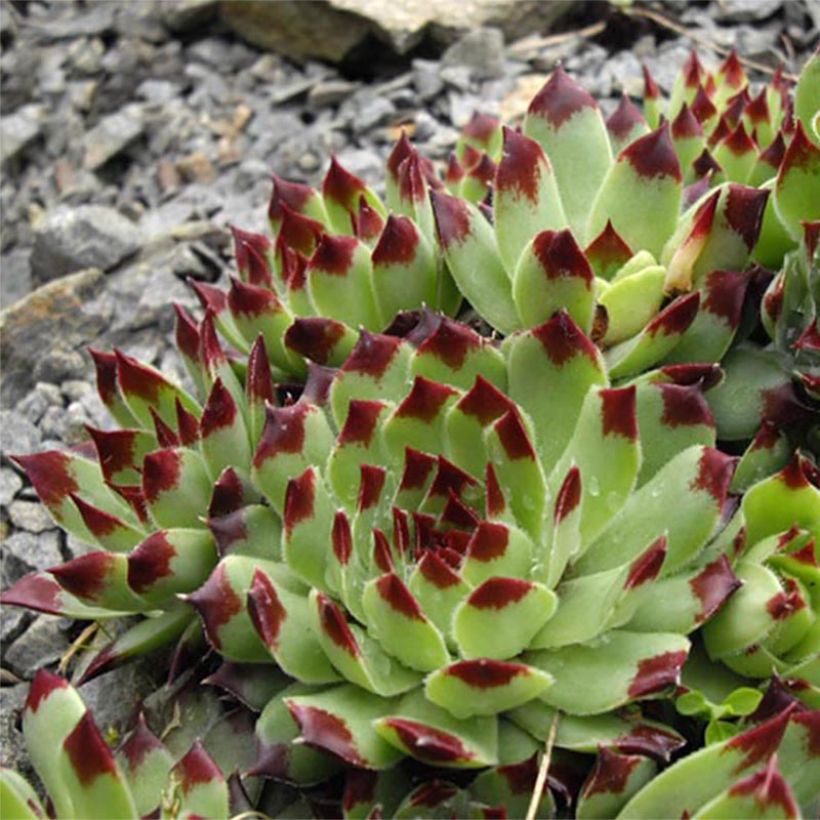

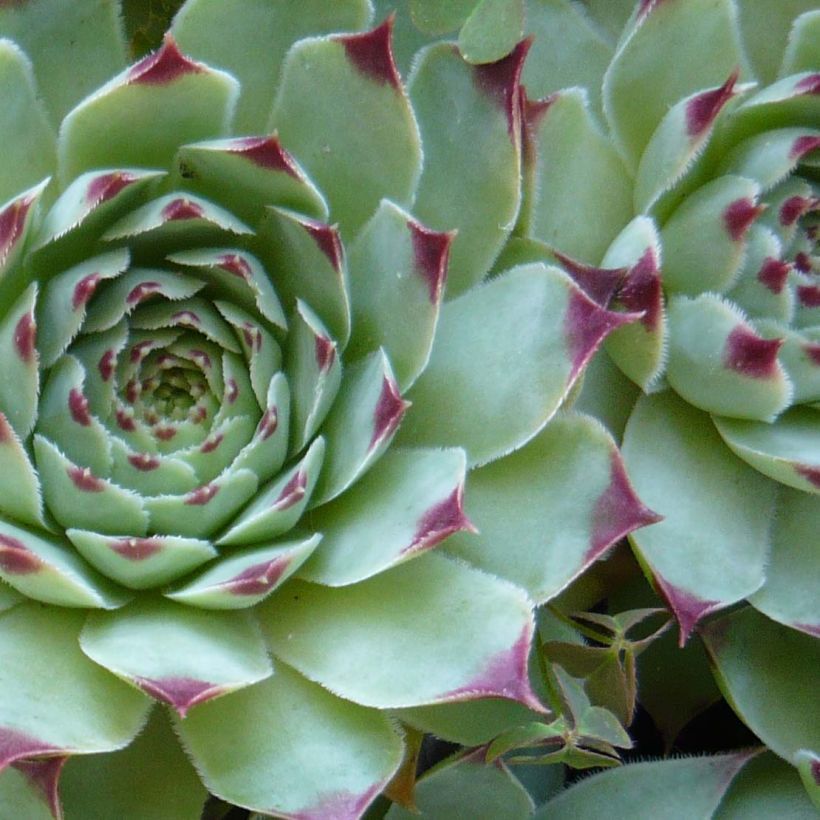

Flowering
Foliage
Plant habit
Botanical data
Sempervivum
calcareum
Crassulaceae
Common Houseleek, Hen and Chicks, Roof Houseleek
Alps
Other Sempervivum - Houseleek
Planting and care
Sempervivum calcareum likes sunny or semi-shaded exposures, and perfectly drained, moist to dry and poor, sandy or gravelly soils. You can plant it in the ground or in a container in spring or autumn, adding gravel or coarse sand to the planting medium. Conversely, if you place it in a rockery or on a wall, just give it a little potting soil to allow it to establish. Afterwards, it will take care of itself.
If you want to multiply it, simply cut a few young rosettes and replant them elsewhere, burying the roots just slightly. Take care of it by ensuring that it is not overwhelmed by taller plants, that it is not covered with dead leaves or vegetation residues, and by removing any faded small inflorescences if necessary.
Planting period
Intended location
Care
-
, onOrder confirmed
Reply from on Promesse de fleurs
Summer flowering perennials
Haven't found what you were looking for?
Hardiness is the lowest winter temperature a plant can endure without suffering serious damage or even dying. However, hardiness is affected by location (a sheltered area, such as a patio), protection (winter cover) and soil type (hardiness is improved by well-drained soil).

Photo Sharing Terms & Conditions
In order to encourage gardeners to interact and share their experiences, Promesse de fleurs offers various media enabling content to be uploaded onto its Site - in particular via the ‘Photo sharing’ module.
The User agrees to refrain from:
- Posting any content that is illegal, prejudicial, insulting, racist, inciteful to hatred, revisionist, contrary to public decency, that infringes on privacy or on the privacy rights of third parties, in particular the publicity rights of persons and goods, intellectual property rights, or the right to privacy.
- Submitting content on behalf of a third party;
- Impersonate the identity of a third party and/or publish any personal information about a third party;
In general, the User undertakes to refrain from any unethical behaviour.
All Content (in particular text, comments, files, images, photos, videos, creative works, etc.), which may be subject to property or intellectual property rights, image or other private rights, shall remain the property of the User, subject to the limited rights granted by the terms of the licence granted by Promesse de fleurs as stated below. Users are at liberty to publish or not to publish such Content on the Site, notably via the ‘Photo Sharing’ facility, and accept that this Content shall be made public and freely accessible, notably on the Internet.
Users further acknowledge, undertake to have ,and guarantee that they hold all necessary rights and permissions to publish such material on the Site, in particular with regard to the legislation in force pertaining to any privacy, property, intellectual property, image, or contractual rights, or rights of any other nature. By publishing such Content on the Site, Users acknowledge accepting full liability as publishers of the Content within the meaning of the law, and grant Promesse de fleurs, free of charge, an inclusive, worldwide licence for the said Content for the entire duration of its publication, including all reproduction, representation, up/downloading, displaying, performing, transmission, and storage rights.
Users also grant permission for their name to be linked to the Content and accept that this link may not always be made available.
By engaging in posting material, Users consent to their Content becoming automatically accessible on the Internet, in particular on other sites and/or blogs and/or web pages of the Promesse de fleurs site, including in particular social pages and the Promesse de fleurs catalogue.
Users may secure the removal of entrusted content free of charge by issuing a simple request via our contact form.
The flowering period indicated on our website applies to countries and regions located in USDA zone 8 (France, the United Kingdom, Ireland, the Netherlands, etc.)
It will vary according to where you live:
- In zones 9 to 10 (Italy, Spain, Greece, etc.), flowering will occur about 2 to 4 weeks earlier.
- In zones 6 to 7 (Germany, Poland, Slovenia, and lower mountainous regions), flowering will be delayed by 2 to 3 weeks.
- In zone 5 (Central Europe, Scandinavia), blooming will be delayed by 3 to 5 weeks.
In temperate climates, pruning of spring-flowering shrubs (forsythia, spireas, etc.) should be done just after flowering.
Pruning of summer-flowering shrubs (Indian Lilac, Perovskia, etc.) can be done in winter or spring.
In cold regions as well as with frost-sensitive plants, avoid pruning too early when severe frosts may still occur.
The planting period indicated on our website applies to countries and regions located in USDA zone 8 (France, United Kingdom, Ireland, Netherlands).
It will vary according to where you live:
- In Mediterranean zones (Marseille, Madrid, Milan, etc.), autumn and winter are the best planting periods.
- In continental zones (Strasbourg, Munich, Vienna, etc.), delay planting by 2 to 3 weeks in spring and bring it forward by 2 to 4 weeks in autumn.
- In mountainous regions (the Alps, Pyrenees, Carpathians, etc.), it is best to plant in late spring (May-June) or late summer (August-September).
The harvesting period indicated on our website applies to countries and regions in USDA zone 8 (France, England, Ireland, the Netherlands).
In colder areas (Scandinavia, Poland, Austria...) fruit and vegetable harvests are likely to be delayed by 3-4 weeks.
In warmer areas (Italy, Spain, Greece, etc.), harvesting will probably take place earlier, depending on weather conditions.
The sowing periods indicated on our website apply to countries and regions within USDA Zone 8 (France, UK, Ireland, Netherlands).
In colder areas (Scandinavia, Poland, Austria...), delay any outdoor sowing by 3-4 weeks, or sow under glass.
In warmer climes (Italy, Spain, Greece, etc.), bring outdoor sowing forward by a few weeks.

































